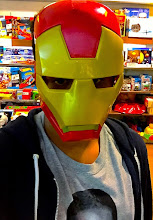Mobile Computing has come a long way since its conception in 1984 at Motorola. We’ve seen a plethora of game changing products and concepts in these 30 years. But in 2015, we encounter an idea that could impact every form of consumer computing, let alone smartphones and tablets. An idea that has been quintessential to the survival and recent resurgence of desktop computers. An idea that could revolutionize the mobile computing market. Modular smartphones, perusers, are a mere year away.
Forgive all the beating around the bush, but the fact remains that Project Ara’s immense potential is enchanting. Every smartphone/tablet user has, at some point, gazed longingly at the new flagship and felt angst at the computing behemoths that short changed them, even though they had laid down hefty sums for the incumbent flagship just months ago. Companies charging premiums for newer models every year (or in Sony’s case, 6 months) has never been a rational concept. Yes, technology grows exponentially. Yes, the competition is intense. But so is customer exploitation. Project Ara seems the panacea to this ravaging exploitation.
So, what is Project Ara? Here’s the official description, from the project’s official page. Excuse the sad attempt to mask my laziness.
“Project Ara is a development effort to create a modular hardware ecosystem--rivaling mobile apps in the pace and level of innovation--around smartphones, with the goal of delivering the mobile internet to the next 5 billion people. Put another way, Project Ara aims to enable users to create a modular smartphone that is precisely tailored to their functional and aesthetic preferences.
It all starts with an endoskeleton, or “endo”, the structural frame and data backbone of the device. The user can populate the endo with “modules”, the building blocks that make up the vast majority of the phone’s functionality and features. The modules can be easily and safely inserted and removed at any time, even while the device is powered on. The modules also have user-replaceable covers or “shells,” which provide a creative canvas for users to make their phone look exactly as they wish. Ultimately, customers will be able to buy a complete Ara phone, configure one from scratch, or buy additional modules through the Ara Module Marketplace.”
In a nutshell, Project Ara smartphones would be just like desktop PCs. Pick your modules, slot them together and you're ready. Upgrade by simply swapping out modules. You could even by extra modules and swap them in or out as necessary.
The possibilities seem endless. Imagine how convenient it would be to carry around a space battery module in your bag on a particularly long journey, swapping it in as needed, eliminating all the fretting about battery life. Find the high megapixel camera on your current smartphone pointless? Fancy a larger speaker instead? Project Ara would allow you to swap out the camera for a larger speaker. Phone getting slower? Need more Storage? Desire a faster processor? Happiness is a swap of a module away.
If smartphones came about with the goal of making people’s lives easier and consequently empowering them, Project Ara would seem the enforcer of these ideals. Giving users complete power over their smartphones, allowing them to pick exactly what they want and what they don’t, sans compromise (in terms of hardware, at least), is what Project Ara would engender. For all of you who craved Samsung’s stunning AMOLED screens, Sony’s Exmor-R image sensors and HTC’s brilliant Boomsound speakers in one phone, your prayers are soon to be answered.
Ultimately, Project Ara has profound implications not only for Smartphones and Tablets, but Laptops too. And quite a few other accessory markets, but more on those in a bit. Much like tablets (the iPad more like) in the early 2010s, Ultrabooks are the rage in the Laptop market right now. Beautiful, pixel-laden screens, Efficient, silent and quick processors, decent battery life and the ever important size-0 body, they’ve got them all. The catch? A motherboard with every component permanently soldered to it. Once you configure your ultrabook at a store or online, that’s it. You’re stuck with the same configuration until you deem a new laptop necessary. But if smartphones make the jump to Modular components, it can only be a matter of time before laptops do too. And I don’t mean the current icky struggle of pulling a laptop apart for a new stick of RAM. I mean complete modularity, like an Ara smartphone. The day an Ara-esque laptop is announced, Tech geeks, Designers and Macbook-toting Hipsters will sing the praises of the lord.
We’ve also got to consider accessory markets that have become so prominent over the last few years. External portable batteries, external storage for smartphones and tablets, external flashes and many more are in quite the parlous state with the advent of modular smartphones. Most of these accessories would be redundant, considering that users could very well invest in modules and swap the modules in or out as needed, rather than buy and lug around external accessories.
While I have portrayed Project Ara as the messiah who can’t come soon enough, an ounce of pragmatism and patience is requisite, along with all the teeming optimism.
Ara will face numerous challenges on its path. Getting established market giants to potentially give up enormous profits for consumer empowerment, gaining traction amongst the masses uninitiated in tech, ensuring that modular smartphones withstand rigors of everyday life, let alone waterproofing and dustproofing, are all said easier than done.
But after dreaming of modular smartphones ever since the greed of a faster processor befell me, I cannot wait for the day they become reality. It’ll be a golden day for technology.












.gif)